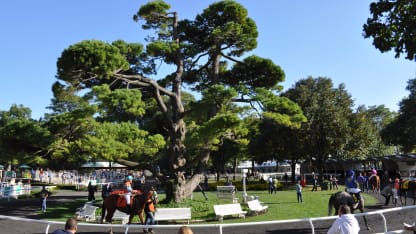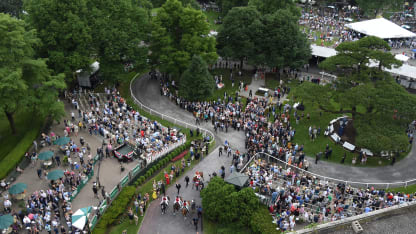Some of the most iconic traditions of Belmont Park are centered around the tree itself. Before each race, a precession of horses and jockeys make their way to the paddock.
"It's where the horses gather before they go out to the track and where they come back after the race," Reisler said. You have the gorgeous paddock combined with the daily ritual of horse racing: the horses coming in, the jockeys coming out, talking to the trainers, getting on the horses before The Call to the Post goes off and everyone heads to the track. ,This happens eight or nine times a dayhowever many races there are on the card. It's a classic site."
As breathtaking of a sight as the pine tree is, the maintenance and upkeep of the enormous and ancient specimen is tedious. Evan Harmon, the Landscaping Supervisor of NYRA, is one of three workers whose duties are almost focused on the tree.
Every single day I'm here, I put my eyes on that tree," Harmon said. It's one of my biggest focal points here, and I have to make sure it's in good shape, watch for cracks, and help examine new growths on it. I spend a lot of man hours taking care of that tree, inspecting it, and making sure it's growing and still healthy."
Evan and his team have gone through immense measures to help preserve the White Pine. They've done everything from air spading the base of the tree to prevent root rot, drenching the tree roots in hydraulic soil while injecting 200 gallons of balanced organic fertilizer with bio stimulants, and even doing a radial trenching to break up the compacted soil around the tree.





















